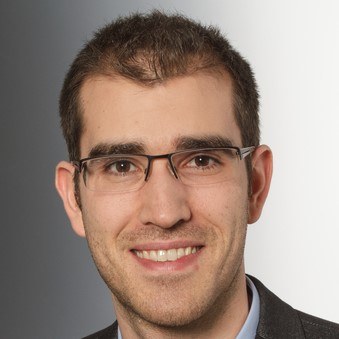
Marcel Huysegoms
Kompetenzbereiche
Kontakt
+49 2461/61-85389
Adresse
Forschungszentrum Jülich GmbH
Wilhelm-Johnen-Straße
52428 Jülich
Institut für Neurowissenschaften und Medizin (INM)
Strukturelle und funktionelle Organisation des Gehirns (INM-1)
Gebäude 15.9 / Raum 4017
Fields of Research
Applying Deep Learning for identifying corresponding microstructures in high-resolution images
The goal of this project is to detect and match cells between consecutive histological images that have been bisected during the cutting process of the brain. In particular, siamese networks are being utilized and examined for the purpose of solving this task. The challenge however stems from the fact that only a small fraction of cells actually does appear within two neighboring sections while the sections themselves contain non-linear deformations. Based on the extracted information, it‘s subsequently possible to reconstruct the images in a precise manner which results in a digital, high-resolution 3D-model of the brain.
Registration of high-resolution histology images of the brain using linear and non-linear transformation models.
Iterative strategies for aligning stacks of histological sectionies often suffer from propagation errors. In contrast, we aim to formulate the task as a global optimization problem that considers all cellular alignment constraints simultaneously. An infinite number of possible solutions exist that fulfill those constraints, however only a few can be considered close to the real 3D shape of the corresponding brain sample. By adding additional regularization terms between cells within a section, the solution to the global optimization task becomes unique and represents the most probable position of each bisected cell in the original, non-distorted space. The optimal parameters of the global 3D reconstruction can be obtained by iteratively solving overdetermined linear equation systems as part of a Gauss-Newton scheme. Due to the immense size of those numerical models HPC implementations are developed to perform the calculations.
Developing of scalable HPC-algorithms that fully utilize the resources available at the Jülich Supercomputing Centre (JSC). In this regard distributed computing and GPU-accelerators build the foundation for any parallelization.
